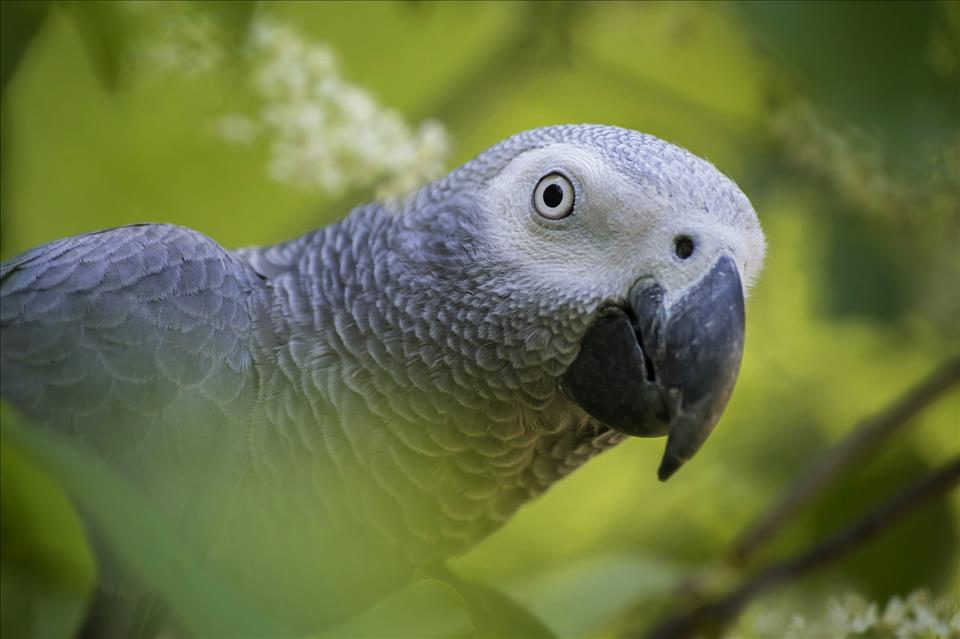
Does Parrot Farming Protect Wild Species? Wildlife Trade Researchers Review The Evidence
However, today, nearly one-third of the 400 parrot species globally face the threat of extinction . Among them is the endangered African grey parrot . This bird was commonly found in many parts of west and central Africa , but numbers in the wild have collapsed. For instance, in Ghana, its population has dropped by 90% to 99% since the early 1990s.
Read more: Don't give up on orange-bellied parrots yet, there's still hope
In recent years, large commercial farms have sprung up, producing increasing volumes of parrots for sale as pets.
South Africa is now the world's leading exporter of parrots – the country has exported over a million parrots from more than 120 species since 2020, primarily to countries in the Middle East and South Asia .
Yet, despite the industry's rapid growth, there are concerns over the effectiveness of legislation to manage its expansion.
As researchers who have spent decades studying wildlife trade and its impact on parrots, we conducted a critical review of the existing literature to evaluate how parrot farming affects the efforts to conserve wild parrots.
Our research uncovered the ways in which parrot farming can affect conservation efforts. We propose ways forward for preventing illegal and unsustainable trade in parrots.
What is commercial parrot farming?Critically endangered citron-crested cockatoos, World Animal Protection
Industrial parrot farms can house thousands of parrots in rows of cages for sale to a mass export market. Many, like budgerigars and cockatiels, are common. But threatened species like grey parrots , military macaws , and yellow-crested cockatoos , are also being bred and sold.
Those in favour of commercial captive breeding argue that breeding parrots to sell can relieve pressure on wild populations . Another argument is that breeding parrots for sale benefits local economies . However, the situation is not as simple as it seems.
Our researchAfrica's black-cheeked lovebird. Vronja Photon/Getty Images
We reviewed all available scientific papers, non-governmental organisation reports and policy documents.
We focused on 16 threatened parrot species that are heavily traded or which have declined because they were unsustainably traded. Two of these species – the grey parrot and black-cheeked lovebird – come from Africa.
We used five criteria to uncover whether parrot farming could be applied as a successful conservation tool.
Preference: Captive-bred parrots must be a suitable substitute for wild-caught ones. If they are not, consumer demand will still create a market for wild parrots.
Supply: Breeding operations must meet consumer demand without stimulating illegal trade. It's important to fully understand market trends to avoid accidentally increasing pressure on wild populations.
Cost: Captive-bred parrots must be more affordable than those sourced from the wild. If wild birds are cheaper, people may continue to purchase them illegally.
Restocking: Breeding operations must maintain themselves without needing to take more parrots from the wild. They must also be able to successfully breed parrots at a rate that meets consumer demand.
Parrot laundering: Regulatory systems must effectively prevent the illegal trade of wild parrots disguised as captive-bred ones. Effective law enforcement is needed to ensure that legal trade does not act as a cover for criminal activity.
Knowledge gapsThere is a lack of information about how many threatened parrots are successfully bred in captivity around the world, and how demand for these birds as pets is evolving.
We also need a better understanding of how trade in one species can stimulate demand for others. People may start by buying smaller, cheaper parrots, and as their interest develops look to “upgrade” to rarer species .
We also need to know more about whether and how parrot farms can stay financially profitable even after strict measures are put in place to stop illegal activities (such as selling wild caught parrots as captive bred stock).
Associated risksMany countries across Africa, Asia, Europe, North America, South America and Oceania are trying to make money by farming threatened parrot species. If rules are relaxed for some more common parrots, it might lead to more demand for rarer species that are already close to extinction.
For example, recent research shows that entrepreneurs in Singapore and the Philippines farm highly endangered parrots like yellow-crested cockatoos , Philippine cockatoos and red-and-blue lories .
China, which was once a major exporter of parrots, is also moving towards loosening laws on the farming of wildlife, including threatened parrots.
While our research focused on the potential conservation impacts, parrot farming can raise animal welfare concerns, spread diseases , and introduce invasive species to areas, which may affect agriculture and human health.
Is there a better way?Regulating parrot farming is a complex issue that requires very careful and informed consideration to avoid any negative impact on some of the world's most threatened species.
There are other effective approaches that don't carry the same risks associated with large-scale commercial captive breeding.
Consumer demand for parrots as pets can be reduced. Law enforcement to combat illegal trade can be strengthened. For communities involved in the parrot trade, alternative livelihoods can be developed and supported.
By combining these approaches, we can still make meaningful progress in protecting threatened parrot species and ensuring their survival in the wild.
This matters because without comprehensive data and evidence, we risk making policy decisions that could unintentionally harm threatened parrot species, and enable the illegal market to thrive.
The authors extend their thanks to Alisa Davies and Angie Elwin for their collaboration on this research and informative insights on this article.

Legal Disclaimer:
MENAFN provides the
information “as is” without warranty of any kind. We do not accept
any responsibility or liability for the accuracy, content, images,
videos, licenses, completeness, legality, or reliability of the information
contained in this article. If you have any complaints or copyright
issues related to this article, kindly contact the provider above.

















Comments
No comment